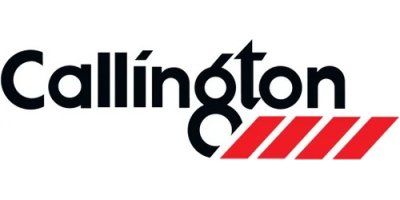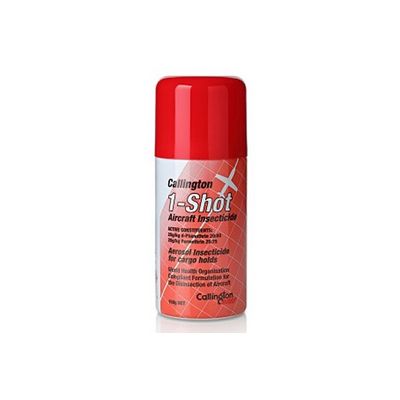

Callington Haven Pty Ltd.
- Home
- Companies
- Callington Haven Pty Ltd.
- Products
- Callington - Model 1-Shot - Aircraft ...

Callington - Model 1-Shot - Aircraft Insecticde
Callington 1-Shot is a non-flammable aircraft approved aerosol insecticide for use inside the aircraft cargo holds prior to departure. This product is used to prevent the spread of vector-borne diseases, such as Dengue Fever, Yellow Fever, Malaria, Chikungunya, and Zika. It is also effective against a range of agricultural pests, which present a biosecurity risk.
Most popular related searches
Callington 1-Shot complies with the World Health Organisation specifications for aircraft insecticides and has the following approvals.
- Boeing D6-7127 and AMS 1450
- Referenced on the Airbus Consumables List: CML 11ABB2
- NATO Stock Number: 6840-66-131-2263
- CAGE Code: Z5104
- In compliance with IATA Medical manual & ICAO Annex 9
- Complies with Ministries of Health & Agriculture, globally
- Callington is an ISO 9001:2015 quality accredited company
Callington 1-Shot Aircraft Insecticde is to be used for cargo hold disinsection at the last port prior to departure or on-arrival.
TREATMENT PROCEDURE PRE-DEPARTURE
- Treatment must be carried out after all cargo has been loaded, and just before the hold door is closed.
- Since aerosols may set off smoke alarms, be sure to advise the crew that hold spraying is about to commence.
- During disinsection and for 5 min after completion of spraying, the aircraft’s air-conditioning must remain off. Recirculation fans may be left on if essential for operation of the aircraft but should be set to the lowest rate.
- Aerosols must be discharged into each cargo hold in such a manner as to ensure that all parts of the cargo hold have been disinsected.
- As the cargo hold door is being closed, leave just enough of an opening to stand the aerosol(s) 1-Shot between the cargo containers.
- Hold the nozzle down to activate the aerosol.
- If more than one can is required, repeat this application method with additional cans.
- When you see that the spray has been activated, close the hold door immediately, leaving the cans in place to complete the disinsection process.
- Once the aircraft has reached its destination, the exhausted cans are to be collected by ground handlers.
- Spraying of holds shall be carried out at a rate of 35g/100m3.
TREATMENT PROCEDURE ON-ARRIVAL
- Since aerosols may set off smoke alarms, be sure to advise the crew that hold spraying is about to commence.
- During disinsection and for 5 min after completion of spraying, the aircraft’s air-conditioning must remain off. Recirculation fans may be left on if essential for operation of the aircraft but should be set to the lowest rate.
- Aerosols must be discharged into each cargo hold in such a manner as to ensure that all parts of the cargo hold have been disinsected.
- Disinsection may be done manually by directing the spray into small pressure hatches where present or by placing aerosols inside the hold.
- Open the hold door by no more than 30cm, place the aerosols inside the hold in a secure upright position and activate the lock-down nozzle(s).
- Once the spray aerosol(s) appear to be functioning correctly, immediately close the hold door to complete disinsection.
- Allow 2 min for the aerosols to fully discharge and then wait a further 5 min for saturation.
- Spraying of holds shall be carried out at a rate of 35g/100m3.
